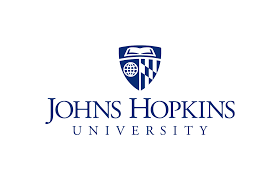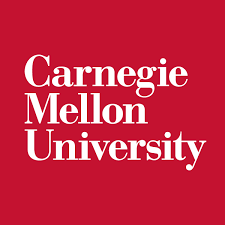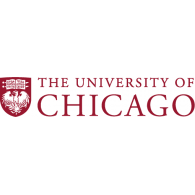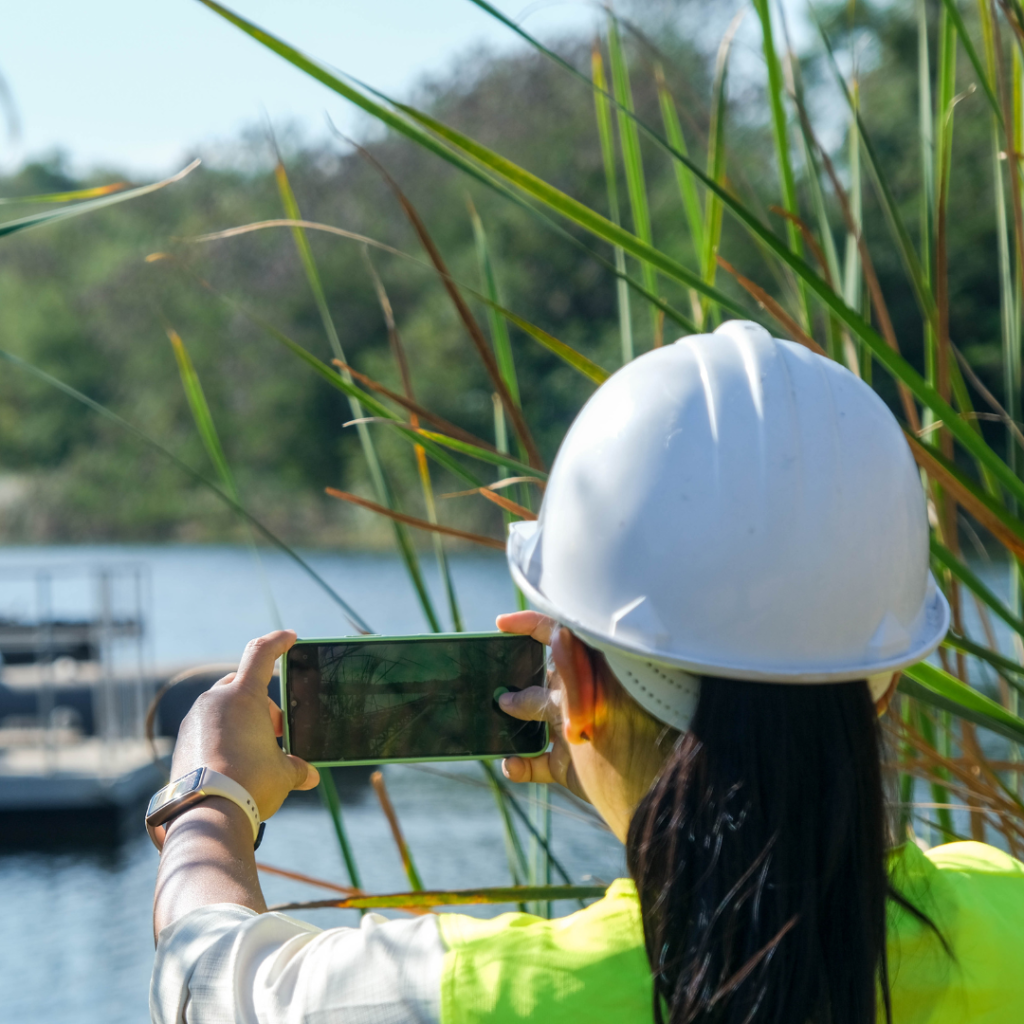30 Graduate Schools with Innovative Technology

Find your perfect college degree
In this article, we will be covering...
The educational setting has significantly transformed along with emerging technologies and connectivity, advocating innovation and out-of-the-box thinking. Regardless of educational levels, traditional classrooms today are also adapting to the new normal with education on virtual access. Now more than ever, innovative technology is now expected in grad schools, too!
Professors are accepting the mutual relationship between innovative technology and education. According to Gallup, 81% of educators agree that there is a great significance in integrating digital tools and resources in the classroom setting.
57% also believe that digital learning tools are more efficient for personalizing discussions and instructions, making them more engaging for students and instructors. Approximately 90% of learners accustomed to technology have utilized digital tools as part of their studies.
As students embrace tech-driven education, graduate schools must step up their game. While these schools remain steadfast in their commitment to educating the next generation and nurturing new forms of knowledge, they must adopt the ever-expanding role of advocating economic development and driving innovation.
Every university or college must address the challenges of digital transformation and play a significant role in higher education innovation.
Students must consider integrating digital platforms and other resources into the academic setting when selecting the best graduate school with innovative technology. They must also look into the innovative efforts and programs every school must contribute to in a digitally-centered society.
As a one-stop source of information, we list graduate schools with innovative technology, including their significant contributions to the world of innovation.
Common Examples of Innovation In Graduate Schools
Competency-Based Education
Although some universities don’t necessarily consider competency-based education innovative, an initiative toward competency-based education can lead to more innovations. For instance, competency-based education drives students to use technology to navigate their individualized learning plan.
In relation, asynchronous learning will help distance learners understand the demand for asynchronous access, including state-of-the-art online learning management platforms. Regardless if they’re using a computer or mobile device, the learning experience must be authentic and convenient.
Virtual Resources and Textbooks
With innovative technology, students can enjoy rented, open-source, and free textbooks and digital books. Innovative graduate schools offer MOOCs or Massive Open Online Courses that can be easily accessible on the web anytime, anywhere.
MOOCs include readings, publications, recorded discussions, and traditional course materials. However, they also feature social media discussions and virtual forums to advocate engagements among professors and students.
Open Curriculum
The concept of an open curriculum has existed for many years, with OpenCourseWare of MIT as one of the pioneers of this initiative. Although they are great innovative features in graduate schools, minor issues may hinder them from being accepted by some students, including certification, feedback, and assessment.
The transition from traditional to non-traditional forms of learning can be challenging. Despite that, eLearning, open curriculum, and MOOCs will be here to stay.
eLearning or Digital Learning Platforms
From Webinars to Blackboard Learn to Canvas, an online learning management system is one of the most common and reliable forms of innovative technology in graduate schools. With videoconferencing, online students can participate in synchronous learning without leaving their homes.
Thanks to a diverse range of online learning management platforms, they can easily attend classes, access course materials, submit their homework and projects, and collaborate with their colleagues in the comforts of their homes.
Faculty Transformation
Since the start of innovation in higher education, faculty members and school administrators have been required to adopt it. Otherwise, they may have a hard time adjusting to new and innovative ways of teaching. In a digitally connected era, access to information is more convenient, especially in the scientific fields.
Scientific researchers, for instance, will no longer have to be in an actual laboratory or facility to experiment and collaborate with their colleagues. Due to innovative technology, proficiency in computers and other digital learning platforms is a minimum requirement for many faculty members.
For instance, a university professor can teach at a small school in a rural setting, yet they can still participate in highly rigorous research with other faculty members in a large metropolitan setting.

The Role of Educators in the New Era of Innovation
As educators in the modern era, they have a collective responsibility to mold and prepare all students for a rapidly evolving workforce. It’s not an easy task when the future of the job market is transforming faster than the old norms of education can handle. Some trends have concluded that well-prepared graduates will have more opportunities to succeed in the face of significant changes in work activities.
University leaders and faculty members have crucial roles in the smooth transition of both the workforce and academia to adapt to rapidly changing technologies. The process is also to make sure the modern economy works for all.
As worldwide leaders in academics, government, and industry discuss the future aspects of work and other crucial issues in the World Economic Forum, universities and colleges must be proactive in seizing opportunities and addressing challenges in the educational aspects of innovation.
Ways of Fostering Innovative Technology in Graduate Schools
Advocating Diversity and Inclusion
Since economic change accelerates, colleges and universities must strive to focus on integrating various perspectives into the workplace. By not diversifying the pool of job applicants, there is a risk of falling short of the growing demand, which includes substantial consequences for the future of innovative technology.
Universities and colleges have an important role in ensuring economic gains are evenly distributed across the country’s economy. It shouldn’t be limited to those who pursue more advanced studies in advanced innovative technologies. For instance, Pennsylvania’s University of Pennsylvania and Drexel University have collaborated with civic, private, and public sectors to develop the West Philadelphia Skills Initiative.
Through this initiative, the residents in the neighborhood of West Philadelphia received opportunities, support, and training for jobs at the sub-baccalaureate level. Since 2010, the West Philadelphia Skills Initiative has provided career opportunities in some leading institutions worldwide to 120+ individuals.
Fostering Engagement with Private Sectors
Universities must foster new partnerships with top foundations, research-intensive institutions, and companies in today’s highly competitive industries. Instead of solely transferring knowledge from the classroom/laboratory to applied learning, the partnerships attract adequate funding for proficient students and faculty. They also enable faculty members and students to brainstorm ideas within and outside the institution.
Promoting Entrepreneurial Ventures
As the pace of innovation accelerates, universities are adapting entrepreneurship as part of the educational experience. These institutions are advocating cultures where out-of-the-box thinking is cultivated and inspired. In 2017, 200+ universities and colleges established facilities dedicated to entrepreneurship and innovation as members of the Global Consortium of Entrepreneurship Centers.
Regardless of what degree, students will pursue advanced studies to significantly change their communities through social entrepreneurship, startups, and other essential ventures. The younger faculty members also have the same excitement and passion for discovering new innovative technologies or collaborating with startups as part of their academic success.
When societal issues require innovative technologies, promoting an entrepreneurial culture is one of the most effective methods by which colleges and universities become stewards of economic accelerators.
The Value of an Innovative Graduate School to Your Profession
Graduate schools with innovative technology have transformed the pace of higher education. Finding a suitable graduate school that best fits your schedule and preferences is essential in completing a degree using innovative educational technologies.
As you progress in your profession, you’ll realize how important it is to get to know and experience state-of-the-art innovation at the start of your graduate studies. Although the profession will help you identify which innovative technology product you’ll deal with, innovative graduate schools help you become technologically proficient in new platforms.
After all, they aren’t limited to technology-related studies. Instead, they also pertain to innovative solutions, research, and skills that graduates can offer in the modern workforce.
To keep up with technological advancements in academics and careers, graduate schools must revolutionize how they deliver advanced education through various innovative technologies.
Top Graduate Schools Featuring Innovative Technology
Johns Hopkins University

Baltimore, Maryland
Accreditation: Middle States Commission on Higher Education
Johns Hopkins University has been a frontrunner in the international response to the 2020 pandemic, with expertise in emergency preparedness, infectious disease, and global public health.
Thanks to Johns Hopkins University’s state-of-the-art technology at the Center for Systems Science and Engineering, JHU provides the international community with a one-stop-shop COVID-19 dashboard of data regarding total cases, deaths, and vaccines administered worldwide through its Coronavirus Resource Center.
In 2019, JHU’s researcher Gregg Semenza garnered the 2019 Nobel Prize in Medicine/Physiology for his outstanding research regarding cells and their ability to sense and adapt to oxygen availability. The university has four Nobel prize winners in its faculty community and 29 among its student alumni and staff.
Headquartered in Baltimore, Maryland, JHU has innovated the healthcare industry with noteworthy innovations, including the first treatment for sickle cell anemia, a rechargeable pacemaker, and the rubber glove as part of the surgical technique.
Carnegie Mellon University

Pittsburgh, Pennsylvania
Accreditation: Middle States Commission on Higher Education
In 1900, Carnegie Mellon University was founded by Andrew Carnegie. The university is known for its advancements and significant contributions to computer science. Cliff Shaw of RAND Corporation, Allen Newell, and Herb Simon of CMU developed the first AI program in 1955. In 1979, the university opened the first university robotics department in the world.
CMU’s alumni and researchers have invented email attachments, Java, and emoticons. In 2014, the NSA or the National Security Agency provided CMU’s Institute for Software Research approval to initiate open-source research on the essentials of secure information systems. The university also houses Brainhub, an interdisciplinary program that aims to discover the inner functions of the brain.
Carnegie Mellon University’s researchers at the Human-Computer Interaction Institute have created a system to identify different track routines and gym exercises. For instance, smartwatches can monitor how many steps a person makes daily, help them track their exercise routines, and improve their well-being.
University of Chicago

Chicago, Illinois
Accreditation: Higher Learning Commission
The University of Chicago was founded with the help of generous donations from John Rockefeller and the American Baptist Education Society in 1890.
Today, the university has yielded significant scientific contributions, including the first controlled, self-sustaining nuclear chain reaction, the proposed existence of black holes, and the speed of light’s measurement. Student and staff alumni of the University of Chicago include 92 Nobel laureates.
In September 2019, UChicago started a new partnership with the National Center for Scientific Research of France for joint efforts to research social sciences, molecular biology, genetics, biochemistry, mathematics, computer science, physics, and molecular engineering.
It is a pioneer collaboration of its kind between an American institution of higher learning and the National Center for Scientific Research of France.
The university also operates 140+ research facilities and institutes, including the Enrico Fermi Institute, which works on theoretical astrophysics, quantum field theory, and high-energy particle physics. UChicago co-partners two major laboratories of the US Department of Energy, namely Argonne National Laboratory and Fermi National Accelerator.
Cornell University

Ithaca, New York
Accreditation: Middle States Commission on Higher Education
Cornell University was granted a $10M gift from philanthropists Nancy and Sam Fleming to build the 7,300 sq. ft. Samuel C. Fleming Molecular Engineering Laboratories. The institution is dedicated to discovering new materials, biomedical research and diagnostics, drug logistics, and drug discovery and design research.
Cornell University is also in progress with the establishment of Cornell Tech, a site dedicated to graduate studies and fostering collaborations between the private sector, students, and faculty. Once the establishment is complete by 2043, Cornell Tech will have 2M sq. ft. of the facility and be home to 2,000+ graduate students.
The university features eCornell, allowing students to choose from a diverse range of award-winning online certificate programs. With structured flexibility, students learn at their own pace without compromising other commitments.
University of Iowa

Iowa City, Iowa
Accreditation: Higher Learning Commission
The University of Iowa is the US’ first state university to enroll men and women equally regardless of racial background. The university is also the first institution to grant a law degree to an African-American learner. The University of Iowa yields approximately $2.4B on the state’s economy from innovative research and discoveries alone in terms of economic impact.
In 2019, NASA offered a $115M research grant to a team of researchers led by University of Iowa’s physicist Craig Kletzing. The primary goal of the research initiative was to identify the interactions between the magnetic fields of the Earth and the sun.
It is the single biggest externally-funded research initiative in the history of the University of Iowa. This project began in 1965 and is one of the 35,000 projects. It has a $100+M funding.
The University of Iowa has more than 150 patents filed in technology, healthcare, chemicals, agriculture, food & forestry, and biotech & pharmaceuticals.
George Mason University

Fairfax, Virginia
Accreditation: Southern Association of Colleges and Schools Commission on Colleges
George Mason University is an innovation-driven public research university headquartered in Virginia. The university features MIX or Mason Innovation Exchange, a purposeful platform that enables venture creations and collaborations. It is a space for the GMU community to collaborate to start companies, create solutions, assess problems, and turn ideas into reality.
The university has MIX@CoreCampus, MIX@Fenwick, and MIX@Innovation as part of its MIX initiatives. The MIX supports and manages collaborative ventures and their corresponding results, emphasizing research, innovation, and entrepreneurship. GMU offers mentoring services to help and guide student entrepreneurs and innovators to turn their plans and ideas into reality.
MIX@Innovation is the first facility of its kind on GMU’s campus. It is a student-managed space open to talented innovators from all areas of discipline and offers free workshops on a diverse range of topics.
University of Pennsylvania

Philadelphia, Pennsylvania
Accreditation: Middle States Commission on Higher Education
In 2019, the University of Pennsylvania acquired $1.02B of the research budget alone. UPenn has been home to outstanding staff and faculty for several years, including four National Medal of Science recipients and four Nobel Prize laureates. It also features 189 research institutes and centers.
The researchers at the Department of Mechanical Engineering and Applied Mathematics at UPenn have discovered a unique method to “repair” metal at room temperature. In 2018, the University of Pennsylvania partnered with Johnson & Johnson to establish a facility at the Pennovation Center, UPenn’s technology and business incubator within Philadelphia.
Entrepreneurs facilitating the site have emphasized developing new medical equipment, consumer and health technologies, pharmaceuticals, and other innovative technologies within the healthcare sector.
Duke University

Durham, North Carolina
Accreditation: Southern Association of Colleges and Schools Commission on Colleges
Duke University is a private research university headquartered in Durham, North Carolina. The university is considered an anchor of North Carolina’s state-of-the-art Research Triangle. Duke’s Innovation and Entrepreneurship Initiative advocates “real actions and tangible products” in its research projects.
As one of the best graduate schools with innovative technology in the U.S., Duke University features the Duke Institute for Brain Sciences, the Superfund Research Center, and the Study of Aging and Human Development.
Duke University’s engineers have made a system allowing electronic circuits to directly print into delicate surfaces, including human skin. Through the printing system, it sprays a novel ink containing silver nanowires onto a substrate.
Once sprayed, the ink dries within minutes into a thin, conductive substance. Researchers have discovered that the substance can develop wearable devices, including bandages integrated with medical biosensors.
The Duke Human Vaccine Institute recently garnered three research agreements worth $29.6M from the National Institute of Allergy and Infectious Diseases to enhance and innovate flu vaccines.
Boston University

Boston, Massachusetts
Accreditation: New England Commission of Higher Education
Boston University is a private research university headquartered on a 135-acre campus. BU is home to the Newbury Biblical Institute, its first school after its charter day in 1869. One of Boston University’s significant contributions to the world of technology was the first telephone. In 1876, Boston University professor Alexander Graham Bell transmitted sound waves to the Boston Athenaeum from his office.
In 2019, Boston University’s Johnson & Johnson Innovation Lung Cancer Center produced a team of researchers who discovered genomic markets that can detect the possibility of lung cancer before any pre-cancerous conditions happen. Through innovative discovery, doctors can diagnose patients with the highest risk of lung cancer and create new treatments that prevent the further progression of the disease.
Boston University has a 19-story Center for Computing & Data Sciences in progress to accommodate new faculty that can learn and teach degrees related to data science. In Fiscal 2019 alone, BU has acquired $579.4M in research awards. Approximately 200+ companies are manufacturing and selling products based on the innovations and discoveries of Boston University.
The University of Texas at Austin

Austin, Texas
Accreditation: Southern Association of Colleges and Schools Commission on Colleges
The flagship university of the UT System is the University of Texas at Austin. UT System features 9,200+ degree programs in STEM-related disciplines and educates approximately two-thirds of Texas’ healthcare professionals. The system has seven Nobel laureates.
In 2019, one of the researchers at UT-Austin, John Goodenough, won the Nobel Prize in Chemistry for his pioneering and state-of-the-art research in developing lithium-ion batteries. John Goodenough shares his prize with other researchers at Japan’s Asahi Kasei Corporation and the State University of New York.
One of the research highlights of the UT System includes the development of ultra-durable temperature sensors for hypersonic automobiles. The sensors are built from ceramic and other non-metallic components. They withstand the harsh conditions of a jet plane in hypersonic flights, including extreme temperatures.
Massachusetts Institute of Technology

Cambridge, Massachusetts
Accreditation: New England Commission of Higher Education
The Massachusetts Institute of Technology has been a frontrunner for the past decades in terms of significant innovations and research. Some of the well-known contributions include accomplishing the Human Genome Project and the development of digital computers.
Since its founding, MIT’s staff and student-alumni communities have garnered 29 National Medal of Technology and Innovation winners, 75 MacArthur Fellows, 59 National Medal of Science winners, and 90 Nobel laureates. Fortune 500 companies founded by MIT graduates include Dropbox and Bose.
MIT’s research is cited more often than other American universities in journal articles, publications, and independent patent applications. Given that MIT is one of the state’s economic drivers, the university has produced graduates who become either startup founders or corporate leaders, generating more jobs and producing a $1.9M annual revenue.
The Massachusetts Institute of Technology features MITx, the university’s official open-source learning platform that provides individuals across the globe with the opportunity to enroll in MIT’s free online courses. The 100% free classes are taught by MIT professors and cover a diverse range of topics.
Stanford University

Stanford, California
Accreditation: Western Association of Schools and Colleges
Similar to MIT, Stanford University is a consistent school contender for innovative technology and research. It is also one of the popular universities consistently performing research and producing new patents that influence other researchers worldwide. Strategically headquartered in California’s Silicon Valley, the university has played a crucial role in forming a networked world.
In 1970, Vint Cerf, a Standard professor, co-designed the TCP/IP protocols that became the core of the World Wide Web. In 1991, Stanford Linear Accelerator Center physicists deployed the first web server outside of Europe. Cisco Systems, Hewlett-Packard, and Google are some of the notable companies founded by Stanford graduates.
One of the innovative discoveries at Stanford University is the development of new-generation batteries that can accumulate energy from the blending of freshwater and saltwater. The discovery called “blue energy” depends on the flows of salt and fresh water alternately separating and depositing chloride and sodium ions from electrodes. Blue energy technology can be helpful in wastewater treatment plants in coastal areas.
Stanford University is home to the Stanford Research Park, an 85-acre life sciences incubator for supporting entrepreneurs and researchers in discovering new cures and therapies for critical illnesses.
Vanderbilt University

Nashville, Tennessee
Accreditation: Southern Association of Colleges and Schools Commission on Colleges
A private research institution in Nashville, Vanderbilt University was established with a $1M grant from Cornelius Vanderbilt in 1873. The university has grown with ten colleges and schools in one centralized location. It has produced six Nobel Prize winners from its alumni and staff.
Vanderbilt’s entry into the world of innovative technology includes inexpensive and lightweight wearable robotics. The mechanical engineers at Vanderbilt developed the first ankle exoskeleton that can be worn without mobility restrictions under the patients’ clothes.
The exoskeleton approximately weighs less than one pound and is perfect for elderly patients with difficulty walking without assistance. In terms of healthcare innovation, Vanderbilt University Medical Center was granted a 5-year, $23M federal grant to train doctors and other healthcare providers on the latest treatment plans for AIDS.
University of Michigan-Ann Arbor

Ann Arbor, Michigan
Accreditation: Higher Learning Commission
Initially headquartered in Detroit, the University of Michigan-Ann Arbor became the flagship university of the U-M System. What was once an institution built on a single building is now the 4th biggest employer. The university’s research expenditures reached an all-time high of $1.55B in 2018. U-M has 484 invention disclosures and more than 20 business startups during the same year.
The University of Michigan-Ann Arbor’s engineers developed the most powerful laser in the US called ZEUS. The National Science Foundation financed the project through a $16M donation.
With an outstanding peak capacity of three petawatts, the concept will help researchers understand the foundations of the cosmos by simulating some of the universe’s most energetic particle and light acceleration phenomena.
Purdue University

West Lafayette, Indiana
Accreditation: Higher Learning Commission
Purdue University is a land-grant university founded by the Indiana General Assembly. Today, Purdue University System has 75,000+ students across its five regional campuses and flagship in West Lafayette. The university’s team of outstanding researchers has developed various innovations over the past decades, including the prominent first commercially feasible red LEDs.
One important aspect of innovation at Purdue University is its breakthrough research of using small, ingestible robots to boost cattle health. It is a project funded by the US Department of Agriculture that involves developing pill-sized devices used to feed herds.
Each device is integrated with sensors for monitoring the overall health and digestive tract of animals. It also features wireless functions so each device can transmit that data to an AI-enabled system for analysis and processing. All robots are mobile; thus, they can travel between the four stomach chambers of the cow. According to the researchers at Purdue University, each device can help farmers improve their herds’ milk production and health.
University of Utah

Salt Lake City, Utah
Accreditation: Northwest Commission on Colleges and Universities
Formerly known as the University of Deseret, the University of Utah is the state’s leading research institution and flagship university founded in 1850. In 2019, the university received $547M+ in research grants, with 56 US patents and 218 innovation disclosures.
As one of the major economic drivers, the University of Utah has founded 230+ startups and corporate organizations since 1970. Researchers at the university have discovered a certain type of gut bacteria that can prevent obesity in mice.
Derived from the Clostridia classification, bacteria yield molecules that won’t allow the gut to accumulate fat. Through the experiment, researchers can discover new therapies and medications for obesity and other related illnesses.
Another noteworthy contribution from the University of Utah includes developing chips that can absorb heat normally emitted from electronics and transform it into power. The chips can be installed on mobile phones and laptops, providing them with cooling features and help in recharging batteries.
California Institute of Technology

Pasadena, California
Accreditation: WASC Senior College and University Commission
California Institute of Technology is a Pasadena-based private research institution of higher learning focused on engineering and science.
Since its founding, CalTech has been affiliated with 38 Nobel laureates, including chemist Linus Pauling, geneticist Thomas Hunt Morgan, and physicist Richard Feynman. The university has a 3:1 student-to-faculty ratio, and approximately 95% of undergraduates immerse themselves in research work.
CalTech has 50 multidisciplinary institutes and research facilities across six divisions. The university also operates NASA’s Jet Propulsion Laboratory, a federally supported facility dedicated to robotic exploration in the solar system.
In 2019, the California Institute of Technology received a $750M grant from Lynda and Stewart Resnick, owners of The Wonderful Company, to fund research related to biosphere and ecology engineering, water and environmental resources, decomposable plastics, biofuels, energy, climate science, and solar science. It is the biggest donation in the history of CalTech for environmental sustainability initiatives as well as the 2nd largest university in the US.
One of CalTech’s remarkable innovations includes making a new polymer heart valve, an inexpensive and longer-lasting alternative to current options. In 2019, it underwent FDA feasibility research and was successfully implanted into a patient for the first time.
Yale University

New Haven, Connecticut
Accreditation: New England Commission of Higher Education
Headquartered in New Haven, Connecticut, Yale University is an Ivy League private research university. It derived its name in honor of the Welsh donor and merchant Elihu Yale.
The university has five former presidents of the US among its alumni community and prominent inventors Eli Whitney and Samuel Morse. Yale University is proud to have four Nobel laureates. LegalZoom, Twitch, and FedEx Corporation are some of the companies founded by Yale alumni.
Innovative technology is one of the pillars of Yale University’s culture. A university team has discovered a new drug for reducing the symptoms of metabolic syndrome, an obesity-related illness affecting one out of three adults in the US.
The new drug lessens bad LDL cholesterol and reverses liver insulin resistance, a primary culprit of Type II diabetes and heart ailments.
Other researchers at Yale University are also creating new biomaterials to improve the quality of medical applications, ranging from artificial limbs to cardiac stents. The biomaterials are made with bulk metallic glasses that are safe when inside the body.
Princeton University

Princeton, New Jersey
Accreditation: Middle States Commission on Higher Education
Princeton University is considered one of the oldest institutions of higher learning in the country, founded in 1746. It is home to 44 Nobel laureates, with 26 of them who currently work at Princeton. According to the university, its faculty community publishes 3,000+ scholarly documents every year.
The university is home to the US Department of Energy’s Princeton Plasma Physics Laboratory, an extensive fusion energy research facility.
Princeton is also allied with the Geophysical Fluid Dynamics Laboratory (GFDL), one of the most prominent climate research and modeling centers worldwide. The university’s Princeton Environmental Institute regularly works with the GFDL for environmental outreach, education, and research, combining the expertise of 20+ academic disciplines.
The researchers at the Andlinger Center for Energy and the Environment have developed a sunlight procedure to effectively separate hydrogen from industrial wastewater. The process involves a lamp to replicate sunlight and water flowing through a chamber containing a “Swiss cheese” silicon interface, a type of bacteria that generates electrical current when accumulating organic matter.
Princeton Neuroscience Institute researchers have mapped more than 3,000 neurons with the aid of video game players. Patrons made the brain maps of EyeWire, a virtual platform that transforms the mundane task of tracing the twisting pathways of every neuron into a competition.
The results will provide comprehensive data to researchers to determine formerly unknown cells and form a relationship between their function and structure to create an “atlas” of the human brain.
University of North Carolina-Chapel Hill

Chapel Hill, North Carolina
Accreditation: Southern Association of Colleges and Schools Commission on Colleges
In 1776, the University of North Carolina-Chapel Hill was authorized by the NC State Constitution. It was the first state university in the US and the only public university to grant degrees in the 18th century. Today, UNC-Chapel Hill is the flagship university of the 17-campus UNC System, with more than $1B in yearly research expenditures.
The University of North Carolina-Chapel Hill’s computer scientists facilitate a nationwide program to develop a platform for evaluating next-gen internet technologies. The program is called FABRIC, which receives funding from the National Science Foundation and will comprise hardware nodes around the US connected by optical links.
The university has also partnered with IBM through its Lineberger Comprehensive Cancer Center to use IBM’s Watson software to identify human genome variations. The procedure will let researchers determine treatment guidelines and provide recommendations to oncologists for proper diagnosis.
Harvard University

Cambridge, Massachusetts
Accreditation: New England Commission of Higher Education
A list of graduate schools with innovative technology and research wouldn’t be complete without Harvard University. It is one of the country’s oldest universities, founded in 1636. In Harvard’s 383-year history, it has produced 48 Pulitzer, 32 heads of state, and 48 Nobel laureates.
One of Harvard University’s remarkable innovative technologies is the development of shape-shifting 3D-printed materials. Engineers at Harvard establish structures out of different materials printed into a flat surface.
When exposed to temperature changes, the materials either contract or expand, transforming into a 3D object. The concept can also be applied to robotics, tissue engineering, smart fabrics, and electronics.
Other innovations come from the Harvard Stem Cell Institute, in which researchers have created a “pancreas on a chip.” The chip utilizes pancreatic beta cells to rapidly screen cells for transplant and tests new drugs through this invention. The device can also have the potential to discover new cell therapies for diabetic patients.
Although Harvard University is a highly selective school, approximately 1.6M+ students around the globe have completed a variety of classes through HarvardX, the official online learning platform offering 100% free classes.
University of Southern California

Los Angeles, California
Accreditation: WASC Senior College and University Commission
The University of Southern California is strongly affiliated with Hollywood and has major expertise in digital entertainment. USC’s Institute for Creative Technologies studies how humans interact with technology through simulations and virtual characters. They also work with Sony Pictures Entertainment and Warner Bros. to create more realistic computer-simulated characters in movies.
The university’s Stevens Center for Innovation is a technology transfer facility that has founded several entertainment startups, including LightStage LLC, responsible for blockbusters King Kong and Avatar’s outstanding visual effects and animation.
The University of Southern California – School of Pharmacy has successfully grown testosterone-yielding human cells in a laboratory in terms of healthcare innovation. It is a notable achievement leading to possible therapies and remedies for men suffering low testosterone-related illnesses.
USC’s Herman Ostrow School of Dentistry researchers have studied how stem cells can be utilized to boost tooth growth, a procedure allowing dentists to grow a new set of teeth in a laboratory to replace missing or broken ones.
University of Central Florida

Orlando, Florida
Accreditation: Southern Association of Colleges and Schools Commission on Colleges
The University of Central Florida has a College of Community Innovation and Education where students and faculty can gain the confidence, experience, and knowledge to strengthen communities and change their lives. Through UCF’s established partnerships and diverse programs, the university uniquely positioned itself to create innovative solutions to complex social challenges.
Students will also have diverse opportunities to engage with faculty experts across various academic disciplines and participate in community-based experiences and programs throughout Central Florida.
Georgia Institute of Technology

Atlanta, Georgia
Accreditation: Southern Association of Colleges and Schools Commission on Colleges
Formerly a technological school that helped transform the South into a post-Civil War industrial economy, Georgia Institute of Technology is one of the innovative graduate schools in Atlanta.
GaTech has 100+ laboratories and research facilities that investigate core research subjects, including robotics, nanotechnology, electronics, data engineering, and bioengineering. The university’s ATDC, or Advanced Technology Development Center, is recognized as one of the world’s prestigious technology incubators.
Georgia Institute of Technology’s researchers have created microscopic bottles that can be filled with medications and sent to supply remedies to targeted cells in the human body. The hollow spheres made with silicon are approximately 200 nanometers in dimension and filled with a combination of anticancer drugs, infrared dye, and fatty acids.
When an infrared laser targets it, the dye accumulates energy, melts the fatty acids, and releases the drug. Experts have said the new drug application can reduce side effects from drug therapies by only emitting appropriate dosages within the affected areas of the body.
Arizona State University

Tempe, Arizona
Accreditation: Higher Learning Commission
According to the US News & World Report, Arizona State University has been one of the best universities in the country for innovation for six consecutive years. As part of its innovative technology initiatives, the university has Innovation Zones at ASU. It is a unique portfolio offering corporate partners a variety of opportunities to collaborate with students at ASU.
With seven unique locations, Innovation Zones at ASU is a pioneering collaboration strategy that empowers international organizations to thrive in today’s competitive industries. With state-of-the-art facilities, the initiative provides unparalleled opportunities for creating solutions to global challenges with its institutional commitment to growing, impacting, and changing on a global scale.
In terms of online learning, ASU has an advisor platform, allowing students to monitor their progress toward completing their degree. It provides them with an overview of what classes to enroll in and the right semester to complete them. The eAdvisor also notifies distance learners if they’ve already gone “off-schedule.”
University of Washington

Seattle, Washington
Accreditation: Northwest Commission on Colleges and Universities
UW is one of the highest-ranked public universities in the US, receiving more federal research funding than any other US public institution of higher learning. The University of Washington’s overall research funding has grown over the past two decades, with $1.35B+ in 2018 alone.
One of the innovations at UW features the making of AI programs to determine cancerous cells during breast tissue biopsies. Through a computer’s ability to identify the visual indicators of carcinoma, UW researchers have outperformed other physicians in particular tests. They have accurately diagnosed pre-invasive breast cancer biopsies, approximately 89% compared to 70% of pathologists.
In 2019, the university stated that it had acquired a $50M grant from philanthropists Mike and Lynn Garvey to build the Garvey Institute for Brain Health Solutions. The institute is dedicated to creating new remedies for brain disorders, including Alzheimer’s disease, addiction, and depression.
Texas A&M University

College Station, Texas
Accreditation: Southern Association of Colleges and Schools Commission on Colleges
Texas A&M University launched the School of Innovation in 2017, intending to find ways to expand TAMU’s economic impact, boost innovation, and improve cross-disciplinary studies.
One of the school’s programs includes Innovation[X] or I[X], providing students with diverse opportunities to be part of a faculty-led research program focused on developing solutions. Some of the projects range from innovation in sustainability through carbon neutrality to real-time analytics for visualizing data and detecting airborne microorganisms.
Each Innovation[X] team must have a multidisciplinary team of 10 to 20 students consisting of graduates and undergraduates from across TAMU. Students chosen to participate in a team will have the opportunity to collaborate in a transformational learning experience.
Columbia University

New York, New York
Accreditation: Middle States Commission on Higher Education
Formerly King’s College, Columbia University was founded by the Royal Charter of King George II of Great Britain. It is New York’s oldest institution of higher learning and the 5th oldest in the country. The university has produced three Former US Presidents Franklin D. Roosevelt, Theodore Roosevelt, and Barack Obama.
Columbia has 83 Nobel laureates from its faculty and alumni community, including physicists Murray Gell-Mann and Enrico Fermi and chemist Irving Langmuir. In 2017, Joachim Frank garnered the Nobel Prize in Chemistry for his work in single-particle cryo-electron microscopy.
Columbia University partnered with Deerfield Management to advocate innovative drug investigation and boost the commercialization of new treatments. The initiative was performed through Hudson Heights Innovations, and Deerfield provided development expertise with approximately $130M in initial funding.
Columbia Technology Ventures, the technology transfer facility of Columbia, has 20 new IP-backed startups, 100 license agreements, and 350+ innovation disclosures annually. In 2019, Columbia’s spinout, Auris Health, has been acquired by Johnson & Johnson for $3.4B.
Northwestern University

Evanston, Illinois
Accreditation: Higher Learning Commission
In 1851, Northwestern University was established by nine Chicagoans who wanted to have an institution to serve the former Northwest Territories. Today, Northwestern has grown to three campuses in Doha, Chicago, and Evanston.
The university also has 140+ research facilities, including the prestigious Buffett Institute for Global Studies. The multidisciplinary research facility was founded in 2015 with a $100M donation from Roberta Buffett Elliott, the sister of Warren Buffett.
The university garnered an all-time high for research funding, with almost $800M in 2019 alone. Some of the latest donations include $46M from the NIH or National Institutes of Health to support the Northwestern University Clinical and Translational Sciences Institute, providing medical researchers with the means to facilitate innovations out of the laboratories, physicians, and patients.
Northwestern University also received $25M from the National Institute of Standards and Technology to finance the Center for Hierarchical Materials and Design.
University of Wisconsin-Madison

Madison, Wisconsin
Accreditation: Higher Learning Commission
A flagship university of the UW System, the University of Wisconsin-Madison is the United States’ first genetics department. It was founded in UW-Madison as the Department of Experimental Breeding in 1910.
The facility became the venue for the first cultivation of embryonic stem cells in a laboratory and the first synthetic gene. UW-Madison’s affiliated technology and research facility, University Research Park, has contributed over $825M to the state’s economy annually.
UW-Madison’s College of Engineering researchers have made electric hats that can aid in hair growth and reverse baldness. These hats are activated by the wearer’s mobility and utilize gentle pulses of low-frequency electricity to stimulate the skin, coaxing dormant follicles to revitalize hair growth.
During experiments on mice, the devices initiate hair production with the same effectivity as baldness medications which often have minor side effects.




